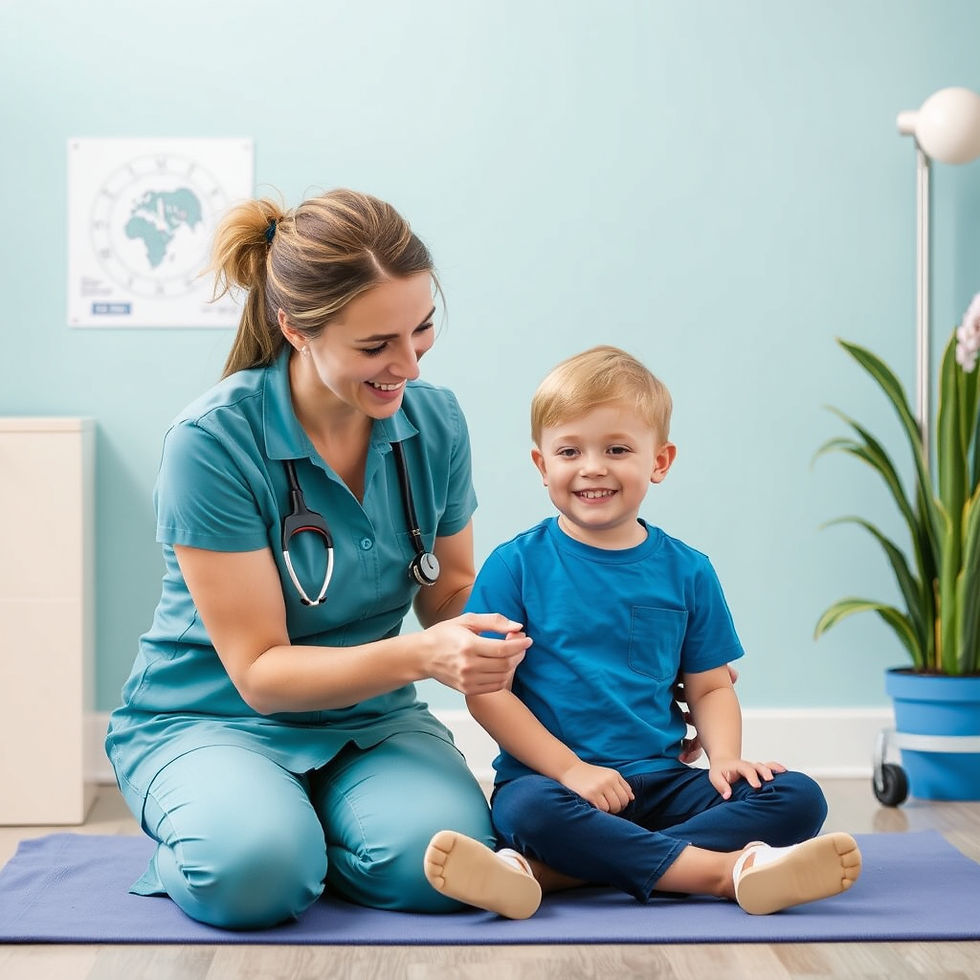How does Occupational Therapy Help the Autistic Student?
- Rosalie Markovics

- Sep 17, 2016
- 4 min read
Updated: Aug 7

How Does An Occupational Therapist Support A Student with Autism?
While teaching in Special Ed. schools and an autism specific setting, the schools provided an occupational therapist as part of the paraprofessional team, supporting the child and developing a program in conjunction with the classroom teacher.
The job prescription of an occupational therapist in a special setting is to help the children participate in the things they want and need to do through the therapeutic use of everyday activities.
Occupational therapists in schools address the students' physical, psychological and cognitive needs through engagement in their everyday activities. They aim to develop students' independence in what they want or need to do.
What activities do occupational therapists focus on?

Children learn to be a part of a family and community and be social.
At school, a child needs to be able to pay attention, follow directions,, socialize appropriately, write effectively, organize their materials, not disrupt others, toilet and eat independently, etc.
The interventions will focus on the student's needs so that the student will be able to function with increasing independence.
OT intervention usually starts with the teacher, parent, or other involved person identifying a student's needs. School-based OT services are provided by the school at no charge to the parent.
The OT works as a team with the class teacher, helping all student but the IEP team, will determine if OT testing is needed for a particular student.
The IEP process is very important as the parents may request help with toileting, eating, riding a bike, writing skills, dressing (tying shoe laces was often requested), sitting on a chair, chewing, keeping calm ...so many things individual to a child.
The class teacher would then write the goal into the child's program and the OT would assist in developing appropriate strategies to achieve the goal.
Some children needed extensive testing and received more time with the OT, and visiting the OT room throughout the day, as part of their regular program.
With experience, I realized that the more I attended to the students' needs and worked in closely with the OT, the more successful my overall class program was.
In addition to the students' individual program goals, we found that most autistic students needed core strength development. I will write a follow up posts next week, outlining the weekly class OT session.
Having an Occupational therapist as part of the school team means that it is convenient for the family as it is during school hours and is at no cost to the family.
It also does not require extensive and time consuming appointments within the community based professionals.
However, the student often has minimal to no time 1:1 with the therapist as students are priority listed.
In my last year with students, I had the OT come in weekly with a set of exercises that were done with the whole class.
There was a great difference in ability between my students as some would go on to a mainstream primary school while others moved into a special ed. setting. (If you did not read any other posts, I worked in an autism specific school and they could spend their first 4 school years there before they moved to other settings.)
However, we found that all the students need Core Strength exercises! g
As the children had core strength difficulties, the OT would come in at the beginning of the year to measure and adjust the chairs to the correct height as many children had difficulty sitting.
Also, the students with high needs would have priority use of the OT room so other students would often have to do their OT in other available spaces, like hallways or outdoors.
Working with OT's was a great learning curve for me and a valuable aset to the children, as well. We were lucky to have a team that were school based as they can deal with so many difficulties the children have and they were a great resource to the teachers.
I would recommend that parents and teachers share OT advice so they can help give consistency to the child.
Follow up post on my whole class weekly OT session next week.
Don't forget to like or share my blog if you liked my posts.
You can visit my facebook page at (1) Autism | Facebook or share something on my facebook group (1) Autism Support for Families and Teachers | Facebook
Calming Products
Calming products are important to autistic children as they are more likely to suffer from Sensory Processing disorder.
When their system becomes overloaded, they may have a melt down, which is quite distressing to witness.
Calming products used before a meltdown is likely to occur, may prevent it and keep the child calm.
Teachers and parents can have a Sensory Calming box for the child to choose from, when necessary.
In conjunction with the Occupational therapist, you can develop a Sensory Diet that can be done throughout the day.
It also teaches children to regulate themselves and it is an important life skill which will need to be continued throughout their life, with changes along the way
Fidget Toys Teachers have used fidgets for years to help restless students focus and keep their hands occupied during instruction. You can also use them as a transition item to help students with routine changes. Keep them in your calming area to soothe or distract agitated students. You can also use them as a fun sensory break or reward.
Help kids with autism and sensory issues manage sound challenges with noise reducing headphones.
Students can also wear them to muffle sound when it's time to concentrate.
People who continually wear them can actually increase their auditory sensitivity. Help kids with autism and sensory issues manage sound challenges with our noise reducing headphones.

To go back to see my list of posts on the Home Page click this button
#occupationaltherapy #occuationaltherapyforautism #occupationaltherapybenefits #autismandoccupationaltherapy
Please feel free to visit me at (1) Autism | Facebook






















Comments